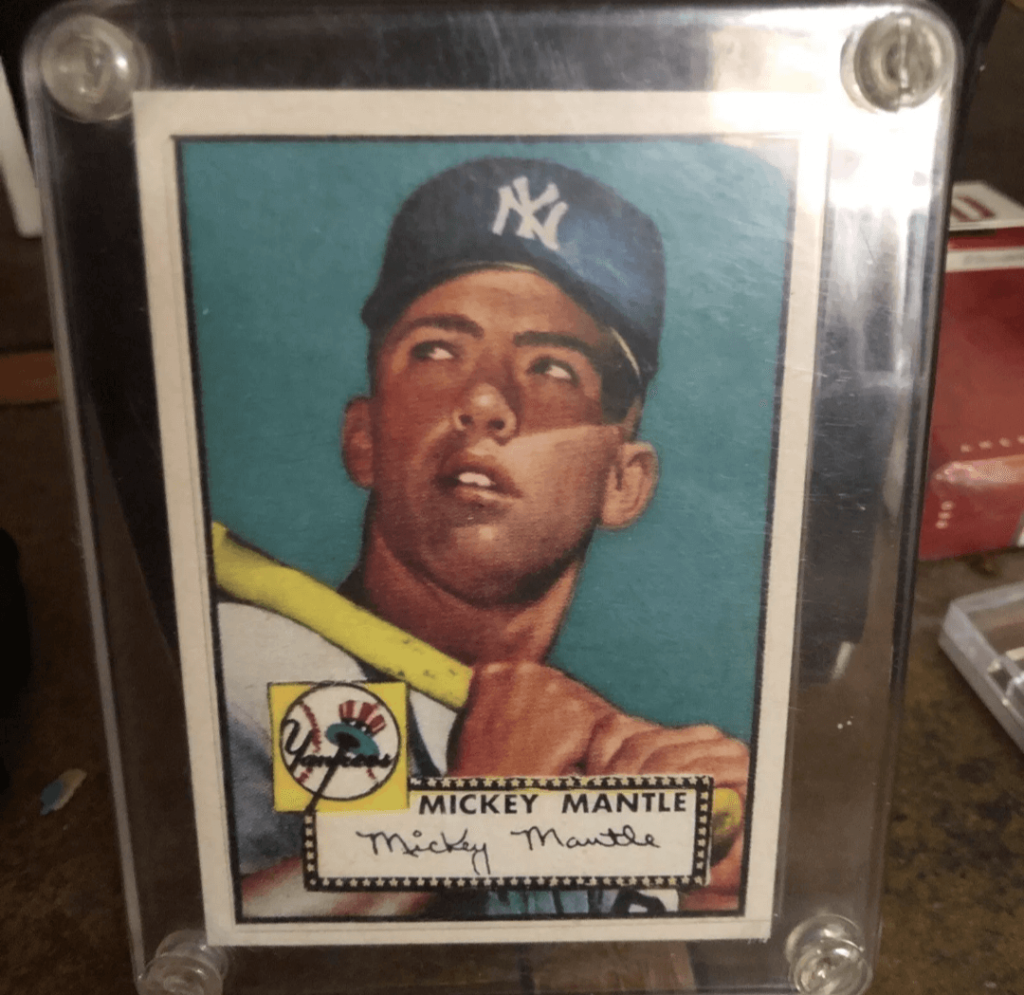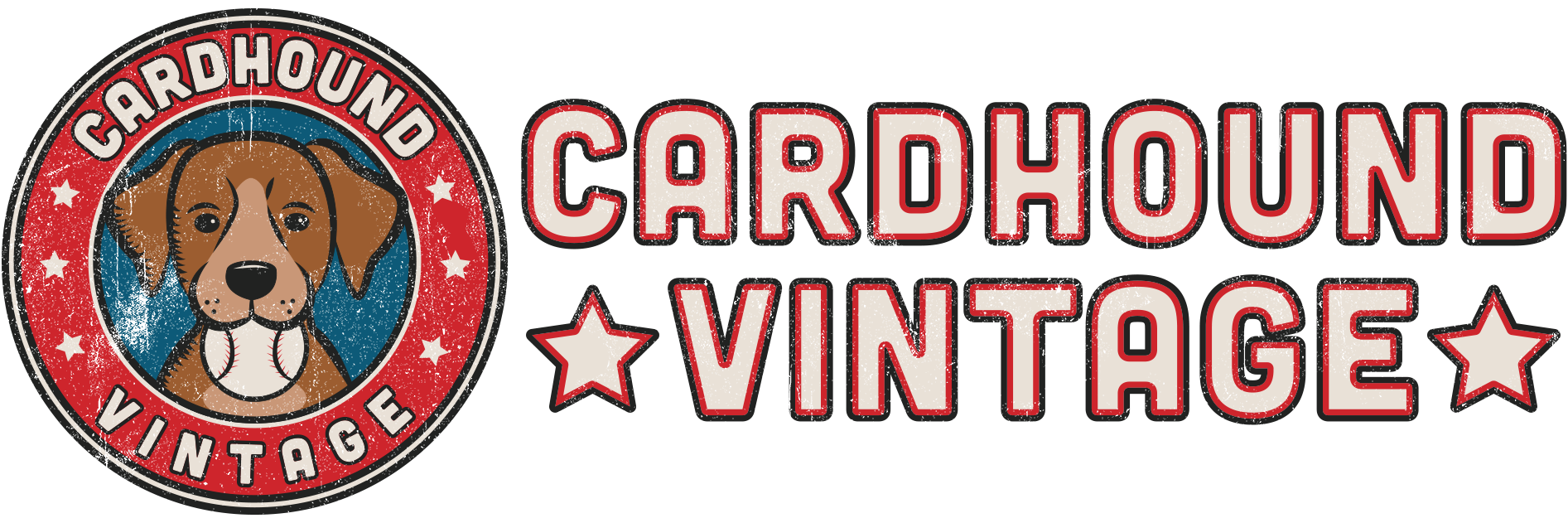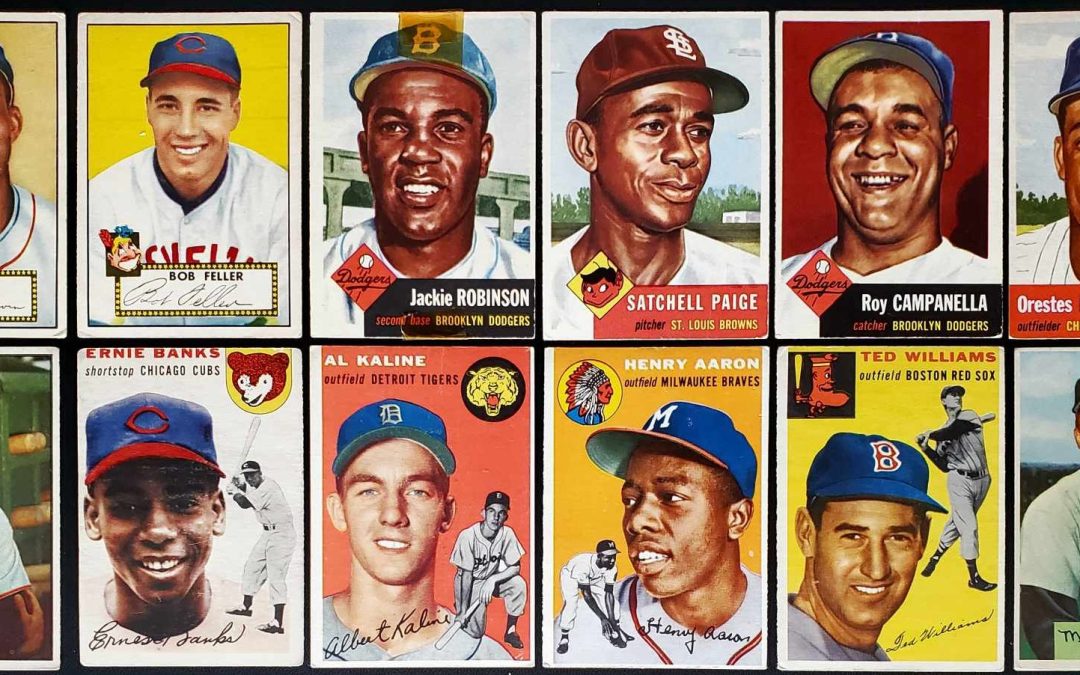You found some old vintage sports cards. Now what?
Perhaps you inherited an old box of dusty, musty baseball cards. Or maybe you collected way back when and are just curious about the value of your collection. In any case, searches like “what are my vintage sports cards worth?,” “sports card values” and “value of old baseball cards” are some of the most frequently searched hobby-related terms–and Cardhound is here to help!
Cardhound Vintage features many articles that help more seasoned collectors fine-tune their sense of valuation, but we wrote this article especially for those brand new to vintage baseball card collecting, or returning after a long break from the hobby. Read on to learn the key considerations in understanding vintage baseball card values.
The 5 factors of value we will discuss in this article are:
- Player Significance,
- Card Rarity,
- Card Condition,
- Market Demand, and
- Authentication / Grading.
Gone are the days of printed price guides like Beckett magazines you maybe had as a younger collector. They still exist—but in today’s fast-paced online-driven market they are not up to date for long. To determine value with accuracy, you need to familiarize yourself with searching eBay closed sales or using other sites like 130point that aggregate data from eBay and other platforms.
But that’s getting ahead of ourselves. There is an art and science to understanding how to use comparable sales (comps) to gauge value. Experienced collectors develop this skill through decades of practice. But the basics are not too difficult to learn.
The first and most basic question is “Hey, are my old cards worth anything at all?” So let’s explore that one. If after reading you have further questions, please do explore the more advanced resources available on the site; leave a comment; or contact me directly.
5 Factors in Vintage Sports Card Values
Like anything else, “supply and demand” are perhaps the most important factors in valuing sports cards.But the answers to questions of value, unfortunately, are far from straightforward–and that’s probably why you are reading this!
Determining the value of vintage baseball cards involves a complicated interplay of factors ranging from rarity and condition to market demand to historical significance. Here’s a closer look at the key elements that influence the market value of most vintage sports cards:
Factor 1: Player Significance

Names don’t get much more recognizable than Hank Aaron
The player featured on a baseball card is of course a primary factor in value. Stars are worth more than common players, with few exceptions. Cards depicting legendary players such as Hank Aaron, Mickey Mantle or Jackie Robinson are inherently more valuable than most others. So, start your assessment by pulling out cards of the “household names” and Hall of Famers. Valuing these cards first will give you insights into the overall value of your stash.
Similarly, cards from milestone moments or record-breaking seasons hold special appeal to collectors. Maris hit 61 homers in 61, and that card holds a little more value that most of his other cards, for example.
Factor 2: Rarity / Scarcity

This Ray Brown (HOF) is fairly rare and this is the highest graded example.
First, if the cards in question are produced much after 1980, I’m sorry—you can almost stop reading here. “Junk era” is the term used to describe the period from the late 1980’s into the 1990’s. This is due to mass overproduction during the period. There are a few cards of value in that era, but not many. True vintage is perhaps defined as 1975 and earlier, though there are some desirable cards into the early 1980’s if condition is very strong. If your cards are true vintage, read on.
Like any collectible item, rarity plays a significant role in determining the value of vintage baseball cards. Cards produced in limited quantities due to printing errors or short print runs are inherently more valuable. For most years of Topps cards, the higher numbered cards were produced later in the year, and in less quantity. But keep in mind—most vintage cards are not especially rare or scarce, except perhaps in high grade. Truly rare cards, by definition, are not likely to turn up in your old shoebox. Miracles do happen, but not often.
Further, rarity alone does not equal value–a fact we explore in more detail here. There are Honus Wagner cards more rare but much less valuable than the iconic T206. On the flip side, 1952 Topps Mantle isn’t especially rare at all–but is of course extremely valuable due to demand.
Factor 3: Condition

These well-loved vintage cards are great in any condition!
Next to player significance, the condition of a baseball card is of the utmost importance in assessing its value. Cards in truly mint condition, free from creases, stains, or other forms of damage, are obviously highly sought after by collectors. They are simply more rare in pristine condition. Not surprisingly, they command premium prices.
Even slight imperfections can significantly diminish a card’s value, making preservation and proper storage essential for maintaining value over time. Centering and other aspects of the original printing cannot be controlled, however. A vintage card can be worth $200, $2,000, or $20,000 (or more) depending on condition. Only an expert hobbyist or a professional grading company can accurately assess the condition of your cards.
Factor 4: Market Demand

’52 Mantle is always in high demand
A very basic tenet of demand is that for most players, the rookie card is the most desirable. Another hobby basic is that the true GOAT players always have demand. For 1950’s-1960’s vintage baseball this means you can never go wrong with Mantle and Mays, for example. The vintage market tends to be fairly stable–there are not many factors that can greatly affect either supply or demand at this point. The legacies of vintage era players are mostly intact and settled.
However, fluctuations in the collectibles market in general can have an impact on the value of all vintage baseball cards. A surge in popularity driven by nostalgic trends or cultural events can drive up prices. COVID has this exact and unexpected effect on the value of all vintage collectible. Keeping up with market trends and engaging with reputable dealers and collectors’ communities like ours can provide valuable insights into current value trends.
Factor 5: Authenticity and Professional Grading

Unfortunately, THIS Mantle is a counterfeit!
I suppose this could be factor #1: if your cards are counterfeit, they are worthless! Cardhound addresses counterfeits here. Professional grading services such as SGC and PSA add value in part through authenticating the cards. These companies charge a fee for their services, and so you want to choose carefully before submitting cards for grading. Some folks naively send all HOF cards off for grading, which is a mistake. Just because a player is in the Hall of Fame, that does not necessarily mean high value.
Grading services authenticate cards and assign a numerical grade based on card condition, with higher grades corresponding to greater value. Investing in professional authentication and grading services can enhance the credibility and marketability of vintage baseball cards. However, it can also be the equivalent of flushing money down the toilet. Seek the advice of a professional. For a primer on submitting cards to SGC through a group submission service, see this resource.
In Conclusion…
In conclusion, the value of vintage baseball cards is a complicated equation influenced by factors such as player significance, rarity, condition, market demand, and authentication. While some cards may fetch life-changing sums at auction houses or through private sales, this is a rare case. More often, that shoebox find will uncover perhaps hundreds of dollars’ worth of cards. And hopefully some of your cards might hold sentimental value that transcends monetary worth.
Join Cardhound!
If you like this content and vintage sports cards in general, please join Cardhound! There is a free option and you get access to Forums with Guest Expert hosts, promos and giveaways, and more!





